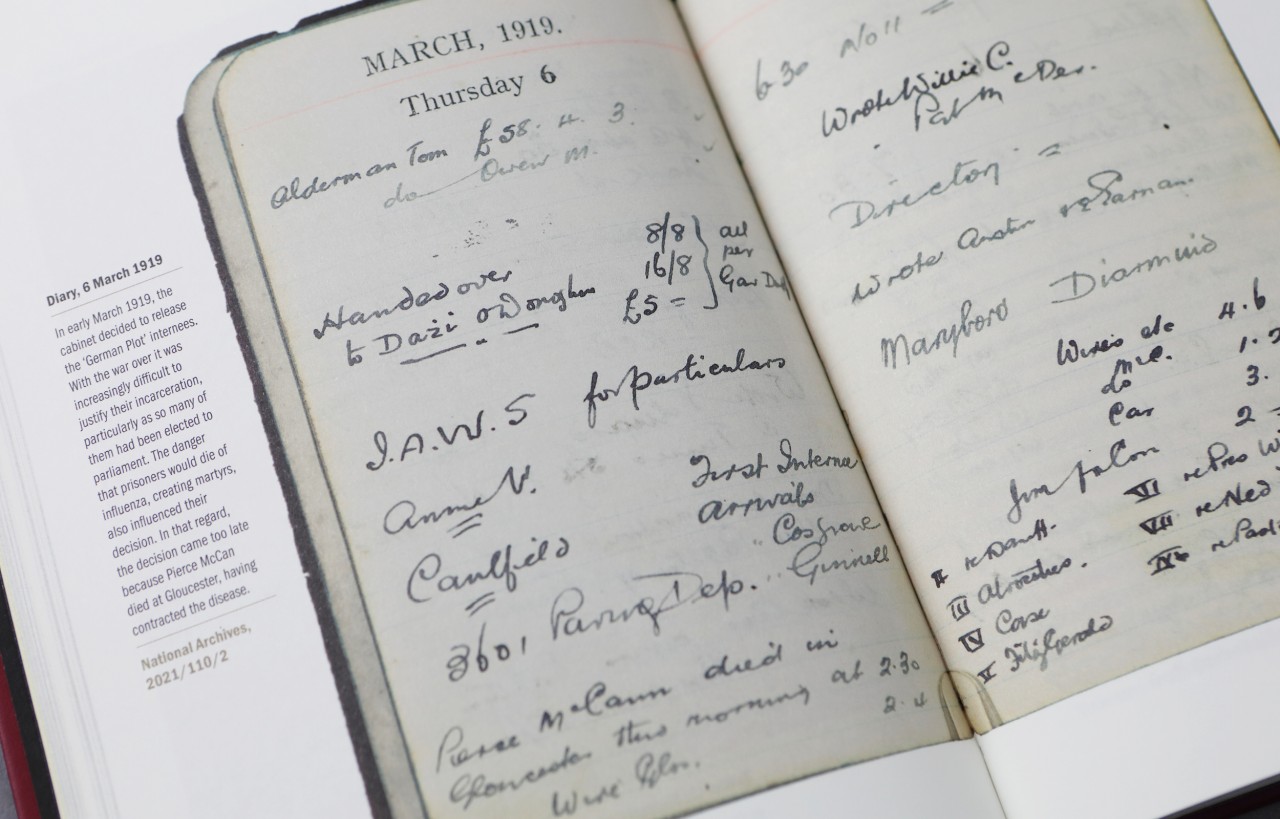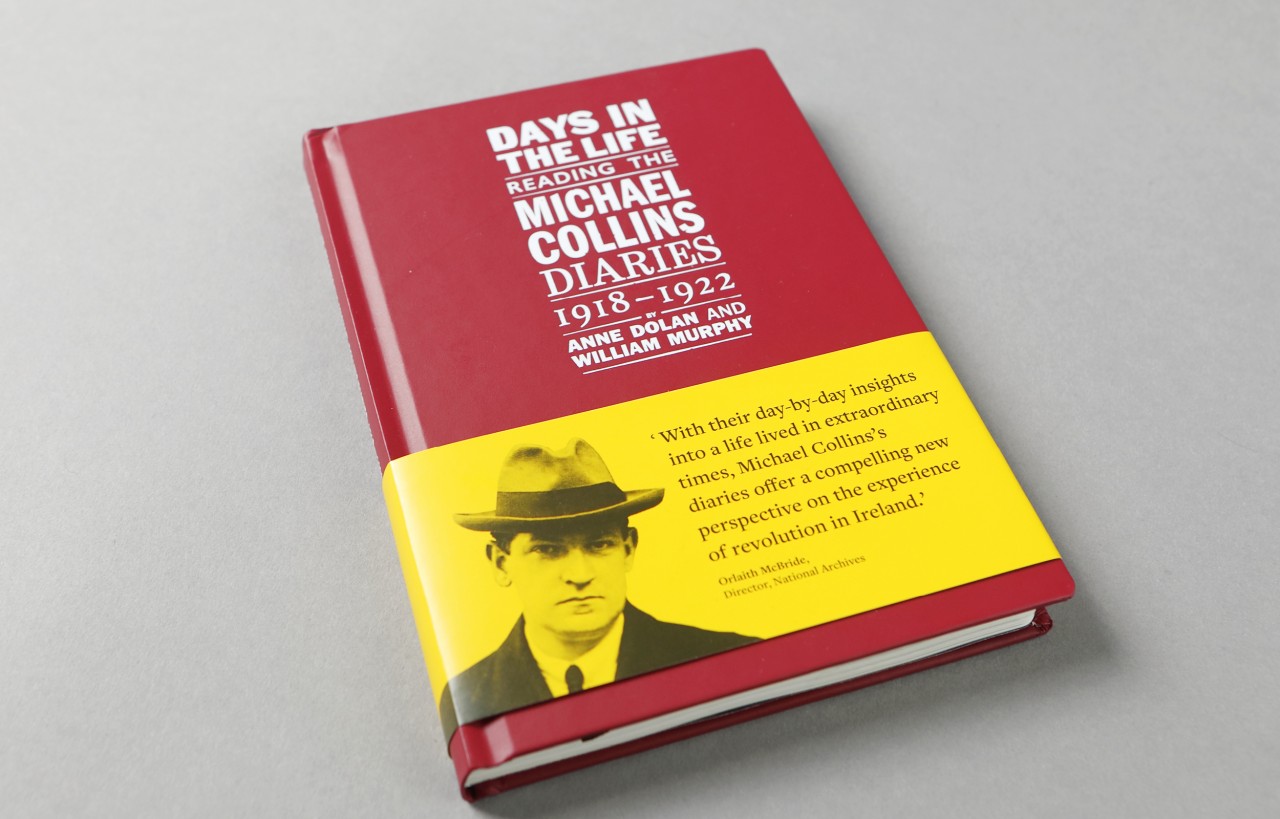Days in the life: Reading the Michael Collins Diaries 1918-1922
October 12th, 2022
October 12th, 2022
Michael Collins the revolutionary, soldier and politician, a key figure in the struggle for Irish independence. He was busy from 1918 to 1922 — he led the war for independence and later negotiated the treaty.
For a large portion of this time he was the most wanted man in Ireland, if he was caught with incriminating diaries he would have been hanged. As such, these are working diaries. They are a collection of hurried notes, necessary lists, names and appointments, things to do, and things not done. They are a record of his long working days. Though these diaries do not contain conventional lengthy entries in which reveal his innermost thoughts, they still tell us much about this extraordinary man. This is not a standard memoir and we didn’t want it to look like a standard book. We thought it should have some of the original diary aesthetic.

The structure of this book is not standard. It’s built around 20 essays, sections like ‘The Big fella at the Ballet’, ‘Coming together, coming apart’ or ‘The GAA’ each explore elements of the diaries. Diary pages, documents and contemporary ephemera are printed to illustrate the essays. Diary spreads are printed at actual size throughout, we set them in the centre of the page so that the reader has a similar experience to Collins when looking at the pages. To avoid images getting pinched in the gutter, we had the pages bound in groups of 8 rather than 16 or 32 to allow the book to open almost flat.
Body text was set in Le Monde Livre Std and chapter titles were set in Royal Gothic, a bold sans, contemporary to Collins. We used Royal Gothic over archive images to introduce each essay.

The cover is a wine leatherette (Collins had a number of wine pocket diaries), with a white foil block for the title, it has a page ribbon marker and closure elastic thread band. These elements were all to keep with the diary aesthetic. A yellow belly band was designed so that browsers in bookshops don’t assume it’s a diary.
This design was done in close collaboration with the authors Anne and William and the excellent team at the National Archives. All of whom did Trojan work. Launched on the centenary of his death (22 August 1922), it is currently the number one-selling book in Hodges Figgis (of all books, not just non-fiction), and the sixth most popular book in non-fiction nationwide.
Purchase the book from the RIA here.
Category: Arts & Culture, Education
Tags: Books, Michael Collins, National Archives